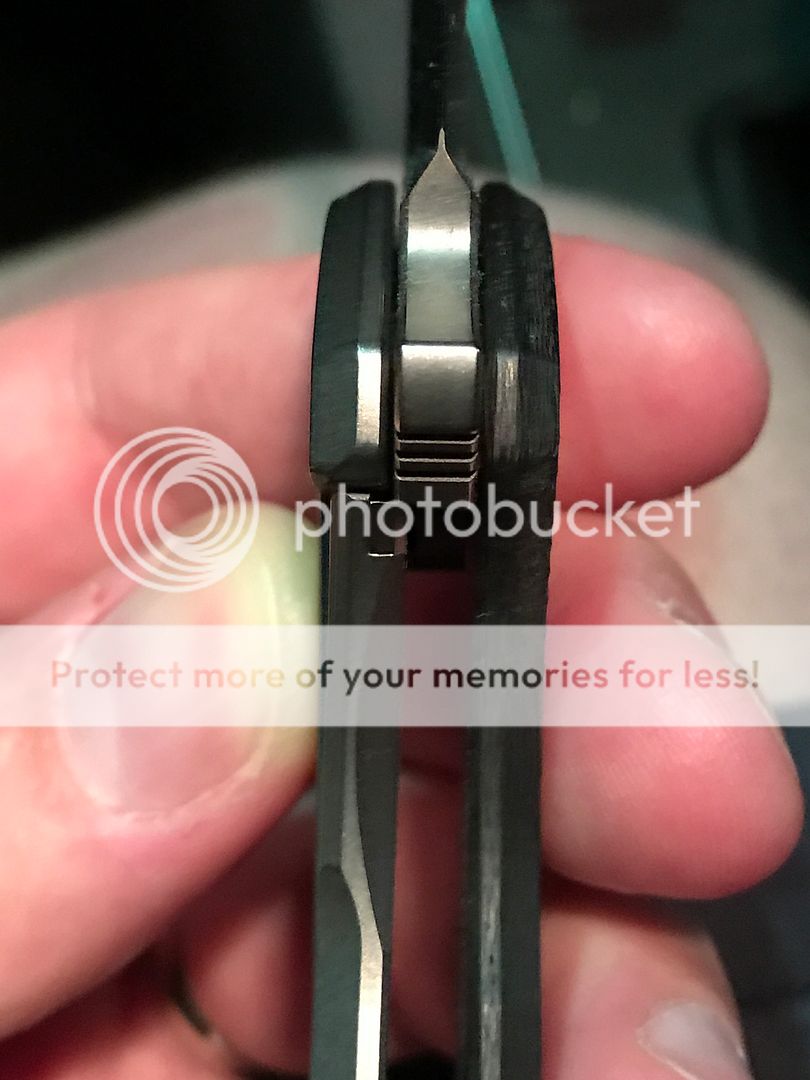- Joined
- Jun 30, 2016
- Messages
- 4,695
The only real benefit I can see to the steel insert is the ability to later install a slightly taller one. When a lockbar travels the full width of the tang and no longer provides enough tension to prevent play there's only a couple ways to fix it:
Beefing up the stop pin, either by rotating it so that an unworn portion is making contact or simply installing one of larger diameter. This reduces the amount of rotation in the blade, leaving the tang closer to the top of the lockbar. It may screw up the geometry though, making contact with just the corner of the lockbar rather than the full face.
Replacing the lockbar, which is the entire scale on a framelock. Costly, but is the only way to elongate the lockbar in order to achieve earlier lockup.
Replacing a steel insert. If you can replace the tip of the lockbar, you can achieve earlier lockup by simply installing a taller tip. So regardless of whether the blade tang or the lockbar insert is worn, it can be fixed with a few cents worth of steel and a couple tiny machine screws.
I don't think they're entirely necessary, when you can use carbidized titanium as was mentioned above, but it does allow for cost effective, efficient warranty service.
Beefing up the stop pin, either by rotating it so that an unworn portion is making contact or simply installing one of larger diameter. This reduces the amount of rotation in the blade, leaving the tang closer to the top of the lockbar. It may screw up the geometry though, making contact with just the corner of the lockbar rather than the full face.
Replacing the lockbar, which is the entire scale on a framelock. Costly, but is the only way to elongate the lockbar in order to achieve earlier lockup.
Replacing a steel insert. If you can replace the tip of the lockbar, you can achieve earlier lockup by simply installing a taller tip. So regardless of whether the blade tang or the lockbar insert is worn, it can be fixed with a few cents worth of steel and a couple tiny machine screws.
I don't think they're entirely necessary, when you can use carbidized titanium as was mentioned above, but it does allow for cost effective, efficient warranty service.

